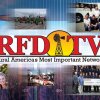Milk classes are often included in market reports, but what does that mean?
A dairy economist with CoBank has an easy way to remember.
“Class 3 is the largest class of milk and it is cheese and whey. I always tell people we think of a nursery rhyme, “Miss Tuffett sat on her muffin, eating her curds and whey.” Curds and whey are all of Class 3. Class 4 is butter in dry milk powders. Dry milk powders and non-fat dry milk is a key export. We export the product throughout the countries around the world, so those are Class 3 and 4. Class 1 is beverage milk, it’s what you drink. Class 2 is all the soft products, think ice cream, yogurt, cottage cheese would be in there because it’s a softer cheese, and the creamers that you see in coffee,” said Corey Geiger.
Geiger says Class 4 saw a big jump last year. Butter production was the highest it has been in 77 years.









